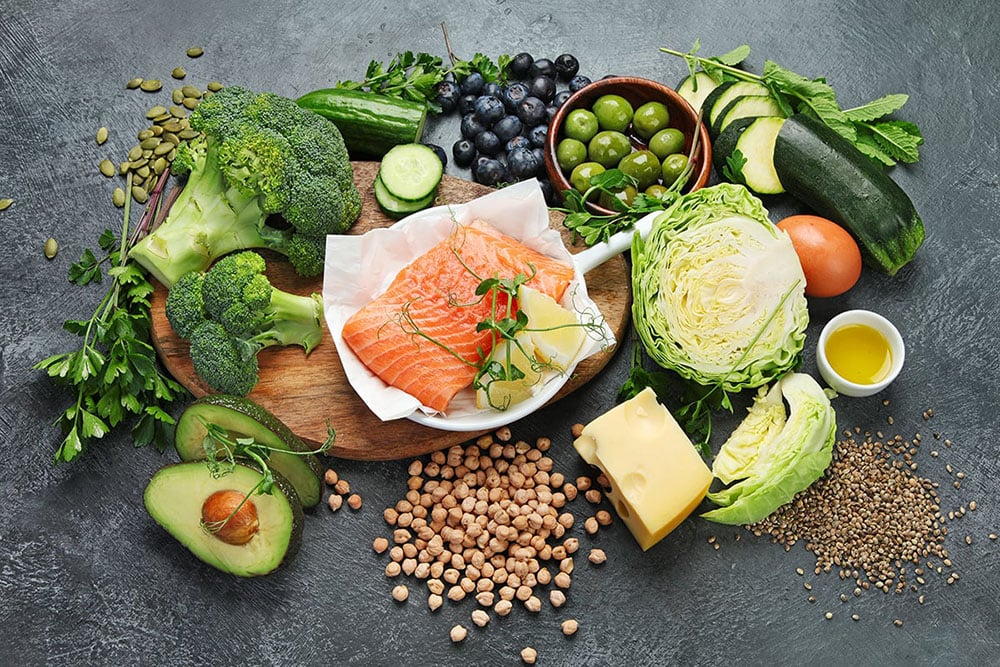
Good nutrition sets up children to grow into healthy adults and it sets adults up to enjoy greater health in old age. As one might expect with all of the changes that the body goes through, the definition of a healthy diet changes over one’s lifetime. So let’s take a look at exactly how your nutritional needs progress over the course of your life.
Infants (Birth to Age 1)

Infancy and childhood are a time of rapid growth and change for the body. In the first year of life height increases by 50%, while weight triples. Requirements for micronutrients and macronutrients by body size are the highest of any stage of life.
Infants generally get all of their nutritional needs met from breast milk but as they transition to solid foods, they’ll need extra hydration. Also bodily stores of iron and zinc can get depleted so look at foods like iron-enriched infant cereals, pureed meats and poultry dishes, and cooked plain tofu.
Children (Ages 1-12)

During these years, nutritional needs are focused on supporting growth and development. Children need adequate protein, calcium, iron and vitamins for bone development, cognitive function, and overall growth.
Children have higher energy needs relative to their body size due to their growth and high activity levels. Carbohydrates play a significant role in providing energy for physical activity. However, many children are picky eaters so it’s important to take time introducing a wide variety of nutritious foods from which to get their carbohydrates, fiber vitamins and antioxidants. This is even more important as junk food is heavily marketed towards them.
As children grow and their bones develop, they’ll need plenty of calcium and Vitamin D. Sources include dairy products, leafy greens, and fortified foods. Vitamin D is also important for supporting immune health as children begin to enter school.
Adolescents (Ages 13-18)
Adolescence is also a stage of life with rapid growth with many changes that highlight the difference in nutritional needs between males and females.
Growth spurts come about during puberty and peak bone mass is achieved during the teenage years so calcium and vitamin D continue to be important at this stage of life along with protein, healthy fats, Vitamin A, and Vitamin C.
As adolescent girls begin their menstrual cycles, their iron needs increase further. Sources of iron include red meat, fish, and dark leafy greens. Teenage girls are also estimated to eat 25% fewer calories than their male counterparts so they’re more likely to experience a vitamin deficiency.
Overall, teens are growing rapidly and extremely active so caloric needs are high especially for young athletes. Adequate intake of carbohydrates, proteins, and healthy fats is crucial for energy and hormonal balance.
Adulthood (Ages 19-50)
Once adulthood is reached, growth is finished and it’s all about maintaining health, preserving quality of life and disease prevention.
Adults should focus on a diet full of nutrient-dense foods, including lean protein, whole grains, healthy fats, fruits, and vegetables. Many medical professionals the world over recommend the mediterranean diet. For maintaining mobility, joint health and bone density, calcium and Vitamin D continue to be important along with collagen. Many aspects of aging are a result of the body’s decreased ability to produce collagen. Often, age-related conditions are related to oxidative damage so antioxidants are essential for maintaining quality of life.
Women planning to become pregnant should make sure to get enough folate, around 400 micrograms per day.
Older Adulthood (Ages 51 and beyond)

Individuals entering this stage of life need to be aware of and take preventive measures for age-related conditions such as osteoporosis, cardiovascular disease, vision degradation, fall risk and decreased ability to produce hormones.
Dietary composition is even more important because older adults often experience a decreased appetite and eat fewer calories but their vitamin and nutrient needs remain the same or even increase leaving them vulnerable to deficiencies.
Adequate protein intake (0.8 grams per kilogram body weight) is important for maintaining muscle mass and preventing age-related muscle loss.
Calcium, Vitamin D, collagen, and magnesium are just as important at this age to prevent osteoporosis and arthritis.
Fiber is an essential nutrient that helps with weight management, cardiovascular health and blood sugar management. It can also help with incontinence so it should be a heavy focus of every senior’s dinner plate.
Vitamin B12 absorption becomes more difficult with age so older adults may consider increasing their intake from eggs, fish, meat and dairy or a supplement.
Older individuals may have reduced thirst sensation, making it important to pay attention to hydration.
It Doesn’t Stop at Nutrition
For adults and older adults especially, maintaining health and good quality of life means staying physically active, getting at least 30 minutes of exercise several times per week. It’s widely recommended to aim for 10,000 steps daily.
Furthermore, getting enough sleep (7-9 hours per night) helps to protect against a number of conditions including heart disease, diabetes and possibly dementia.
Bottom Line
These are general guidelines for how your nutritional needs can evolve over the course of your life. But individual health conditions, activity levels, where you reside and other factors can affect your individual needs.
This article is provided for informational purposes only and is not intended to be used as medical advice. If you have immediate concerns about your health, please seek the help of your physician.





Validate your login
Sign In
Create New Account